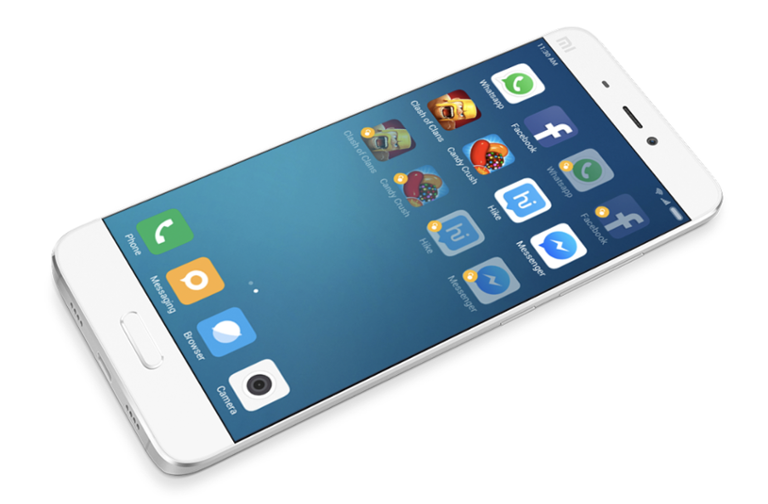Xiaomi is stepping its game up. The mobile-device company has confirmed that its rumored ‘Pinecone’ system-on-a-chip (SoC) is coming, and will provide more details during this year's Mobile World Congress. The SoC is said to be an octa-core offering with four ARM Cortex-A73 units and four Cortex-A53 cores. As persistent rumors note, there may also be a lower-cost Pinecone (please call it ‘pine-nut,' Xiaomi!) with eight Cortex-A53 cores. We should also point out that the ‘Pinecone’ moniker isn’t yet confirmed (but we like it). Xiaomi is set to follow Apple and Samsung down the proprietary SoC rabbit hole. Apple has its A-series, while Samsung has Exynos. The most obvious benefit is optimization. In benchmark testing, both Apple and Samsung routinely rate higher than many manufacturers who use off-the-shelf SoCs from Qualcomm and others. Pinecone isn’t rushed, either. Xiaomi set up a subsidiary, Pinecone Electronics, to handle its SoC in 2014 along with Leadcore, a SoC manufacturer than specializes in CDMA and LTE technologies. In 2014, Xiaomi also took a 51 percent stake in Leadcore. All told, Xiaomi and Leadcore could actually one-up Apple and end up more comparable to Samsung. Apple flip-flops between TSMC and others (typically Samsung) for its SoC manufacturing, while Samsung controls its entire stack in-house. [caption id="attachment_140034" align="aligncenter" width="1080"]  Xiaomi Pinecone[/caption]
Xiaomi Pinecone[/caption]
Xiaomi Is Poised to Dominate
Xiaomi has a lot going for it. Mi devices are in high demand, and the company often ranks high on worldwide sales charts of smartphone vendors – despite having zero presence in the United States. The company also has a solid fan-base and culture, and nobody seems to care if it blatantly copies Apple at just about every turn (even though it denies as much). But if domination is what Xiaomi wants, a homegrown SoC is a good start. IDC’s quarterly smartphone shipment charts are routinely lead by Samsung, Apple and Huawei – all OEMs with proprietary SoCs (Exynos, A-series and Kirin, respectively). With its own SoC, Xiaomi can better control its supply chain and start pumping out far more hardware. Android fans stateside are (still) eagerly awaiting Xiaomi’s U.S. debut, and pinecone is likely a precursor for that. The flipside to hardware is software, and that might be the other big reason for Pinecone. Xiaomi’s MIUI is currently a skinned version of Android, similar to what Samsung has with TouchWiz. If you believe Xiaomi, MIUI is special; if you listen to naysayers, it’s a bold-faced ripoff of Apple. However you feel about MIUI, it’s another solid indicator that Xiaomi needs its own SoC. Apple creates its own chipset (in part) to better manipulate how apps run on iOS, where it tends to prioritize things like the GPU when apps launch. It also allows Apple to massage battery life by utilizing low-power cores as it deems necessary for background tasks. Xiaomi’s latest, the Mi Mix, has received favorable reviews with a quad-core Snapdragon 821. Still, it has what some consider middling battery life from a 4,400mAh power source. SoC optimization would help it be a true worldwide success. MIUI could also be shifted into a more proprietary realm. There's a developer portal, but it lacks the tools necessary for a standalone platform. Currently, it’s just a secondary way to distribute apps globally. An ‘Open API’ does little more than allow developers authorization access for MIUI users and an entry point to Mi Chat, Xiaomi’s proprietary messaging service. A review from Android Authority points to why a stronger developer platform is necessary for Xiaomi. The Mi Mix’s big, beautiful screen often letterboxes content because it’s not optimized for the display. Similarly, MIUI developers can’t optimize apps for Xiaomi’s hardware like the Mix or curved-screen Mi Note 2. Why build flashy hardware if apps can’t take full advantage? Perhaps one of the more damning caveats offered in Mi phone reviews involves MIUI. Typically, reviewers stateside simply look at it as a curiosity that isn’t available to us, something that will have to change when Xiaomi broadens its scope to involve the U.S. But that won’t happen right away. The first device believed to carry a Pinecone SoC is the Mi 5c, which first found its way to benchmark tests in October. If annual release cycles hold true, we could see it this Spring. From there, it’s up to Xiaomi to use Pinecone as a springboard to bigger and better things for developers and users, but there’s a lot of reason to believe something special is on the horizon. Apple and Samsung should take notice. Update: At MWC, Xiaomi officially announced Pinecone's official name: Surge.

